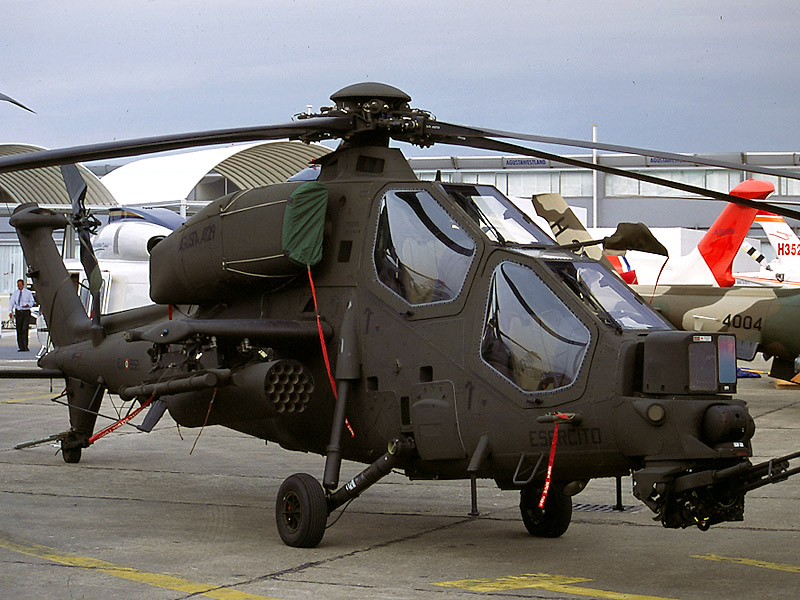 The A129 Mangusta [Mongoose], armed with anti-tank and area-suppression weapons systems, is meant primarily as an attack helicopter to be used against armored targets. The heli can operate throughout day, night, and all-weather conditions. The A129 Mangusta claims to be a proven 'hot climate' operator, as demonstrated throughout its peacekeeping operations. The A129 was succesfully used in Somalia where it proved highly reliable and intensely flexible. The A129 MANGUSTA is manufactured in Italy by the Agusta aircraft company. Agusta developed the A129 Mangusta anti-tank helicopter, the primary attack helicopter to be designed and |created wholly in Europe, that demonstrated Agusta's capability to satisfy the most advanced technical requirements. Italy is the only country with this helicopter in its inventory, with the Italian Army.
The A129 Mangusta [Mongoose], armed with anti-tank and area-suppression weapons systems, is meant primarily as an attack helicopter to be used against armored targets. The heli can operate throughout day, night, and all-weather conditions. The A129 Mangusta claims to be a proven 'hot climate' operator, as demonstrated throughout its peacekeeping operations. The A129 was succesfully used in Somalia where it proved highly reliable and intensely flexible. The A129 MANGUSTA is manufactured in Italy by the Agusta aircraft company. Agusta developed the A129 Mangusta anti-tank helicopter, the primary attack helicopter to be designed and |created wholly in Europe, that demonstrated Agusta's capability to satisfy the most advanced technical requirements. Italy is the only country with this helicopter in its inventory, with the Italian Army.The four-blade main rotor is mounted on the top center of the cabin, while weapon-carrying wings are short, stubby, and mid-mounted on the fuselage. The fuselage is slender and tapered to the rear, with fastened landing gear. The tandem cockpit is glassed-in and flat-plated, and tapered from the cockpit to the blunted nose. The tail boom tapers to the rear, with a high, swept-back fin with square tip. The flats are unequally tapered with a square tip, while the belly fin has the rear landing wheel connected. The tail rotor is mounted on the left part.
Two turboshaft engines with semicircular air intakes are mounted alongside the top\ of the fuselage. The Rolls-Royce Gem 1004, the powerplant in the Agusta A129 attack helicopter, comes from the Gem family of engines originally designed as military engines to meet British Ministry of Defence needs. The Gem 1004 achieved type approval in 1986 and entered service with the Italian Army in 1989. It incorporates features to boost the mission capability of attack helicopters in all phases: simple engine controls with automatic engine management, quick start-up, high power for quick transit, low specific fuel consumption for endurance, low signatures, quick engine response for agility, strong design and emergency rating for battlefield survivability, low fuel consumption for secure return and low maintenance.










